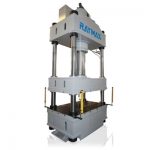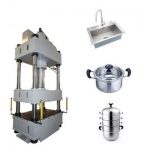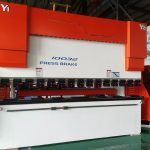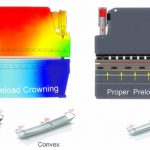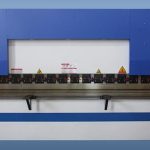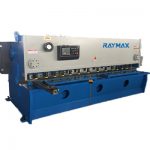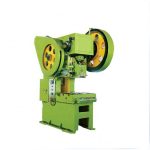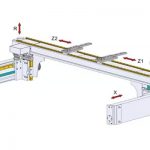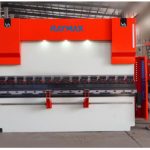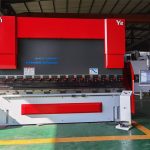100T four-column hydraulic press is a machine that uses hydrostatic pressure to process metal, plastic, rubber, wood, powder, and other products. It is often used in pressing processes and press forming processes. Sometimes, some error occurred. Zhongrui, as China famous hydraulic press machine manufacturer, provides professional solutions to these problems in this article.
The slider has the phenomenon of sliding down and cannot stop at any position.
1. The safety relief valve of the lower cavity of the F7 master cylinder fails, causing no supporting force.
①The safety relief valve spool is stuck with foreign matter, causing no supporting force. Check and clean.
②The spring of the safety relief valve is broken, causing no safety supporting force. Replace it.
③The safety relief valve cone valve is not matched, resulting in a small safety supporting force, so it is researched and equipped.
2. The main cylinder piston head sealing ring is aging and leaking oil. Replace the piston head sealing ring.
3. The sealing ring of the lower guide sleeve of the master cylinder is aging and leaking oil. Replace the sealing ring of the lower guide of the master cylinder.
4. Oil leaks at the joint of the pipeline leading to the lower cavity of the master cylinder. Replace the sealing ring at the joint and check whether the joint is cracked.
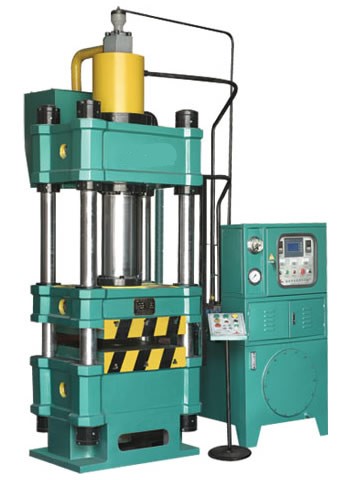
The fault that the slider cannot return to the bottom dead center and the troubleshooting methods.
1. The high pressure of the main cylinder cannot be removed and cannot return. There are three reasons for this:
1) The 9YA solenoid directional valve is faulty, causing no control oil to open the control piston of the filling valve, and the high pressure of the master cylinder cannot be unloaded.
①The electromagnet is not working. Check if there is electricity passing through.
②The solenoid valve core or iron core is seized and cannot be reversed, cleaned, and equipped.
2) F9 main pressure valve failure caused no return force (see attached picture 1 for specific structure)
①The main valve core orifice of the plug-in pressure valve plug-in is blocked by foreign matter, causing the return system to be weak. Check and clean.
②The plug-in pressure valve core and valve sleeve are seized, and the system pressure cannot be built in the return stroke. Check the research and distribution.
③The thrust spring in the cartridge pressure valve is broken, and the system pressure cannot be built upon the return stroke. Check and replace.
2. Although the main cylinder's high pressure is removed, the system has return pressure. That is, the 2YA and 3YA electromagnetic relief valves work normally, but the slider cannot return. There are two situations:
1) The 4YA electromagnetic reversing valve failed, causing the F6 main valve to fail to change direction, and the return pressure oil did not enter the lower chamber of the main cylinder.
①The electromagnet is not working, check if there is electricity passing
②The solenoid valve core or iron core is seized and cannot be reversed, cleaned, and equipped
2) The safety relief valve in the lower chamber of the F7 master cylinder fails, causing the return pressure oil to be released from the safety valve
① There is foreign matter in the spool of the safety relief valve. Check and clean it.
②The spring of the safety relief valve is broken. Replace it.
③The safety relief valve cone valve is not researched and matched.
3) The 6YA solenoid directional valve failed, causing the F8 main valve to fail to change direction, and the return pressure oil did not enter the lower chamber of the main cylinder.
①The electromagnet is not working. Check if there is electricity passing through.
②The valve core or iron core of the solenoid valve is seized and cannot be reversed, cleaned, and equipped.
4) The spool of TYA and 8YA solenoid directional valve are not in the neutral position, causing F9 to open. The return pressure is released from F9, and the slider cannot return.
5) The F9 cartridge pressure valve is faulty, and the return system pressure is drained from F9. (see Figure 1 for the specific structure)
①The main valve core orifice of the plug-in pressure valve plug-in is blocked by foreign matter. Check and clean.
②The plug-in pressure valve core and valve sleeve are seized. Check the research and distribution.
③The thrust spring in the cartridge pressure valve is broken. Check and replace it.
3. The 2YA, 3YA electromagnetic overflow valve malfunctions, causing the pressure oil output by the high-pressure oil pump to be in an unloaded state, and the return system pressure cannot be built.
①The fatigue strength of the overflow valve spring is not enough or broken and does not work. Check and replace.
②The joint surface of the relief valve and cone valve is not matched. Check the research and distribution.
③The 2YA and 3YA electromagnets are not working. Check if there is electricity passing through.
④The 2YA, 3YA solenoid valve core or iron core is seized and cannot be reversed. Clean and research.
⑤ F2, F4 main cartridge pressure valve plug-in main valve core orifice is blocked by foreign matter, causing the return system to be weak. Check and clean;
⑥F2, F4 main cartridge pressure valve spool and valve sleeve are seized, and the return system pressure cannot be built. Check the research and distribution.
⑦The thrust spring in the F2, F4 main cartridge pressure valve is broken, and the return system pressure cannot be built. Check and replace
4. The seal ring of the piston head of the master cylinder is damaged, causing oil to flow through the upper and lower chambers, which prevents the return stroke. Replace the seal ring.
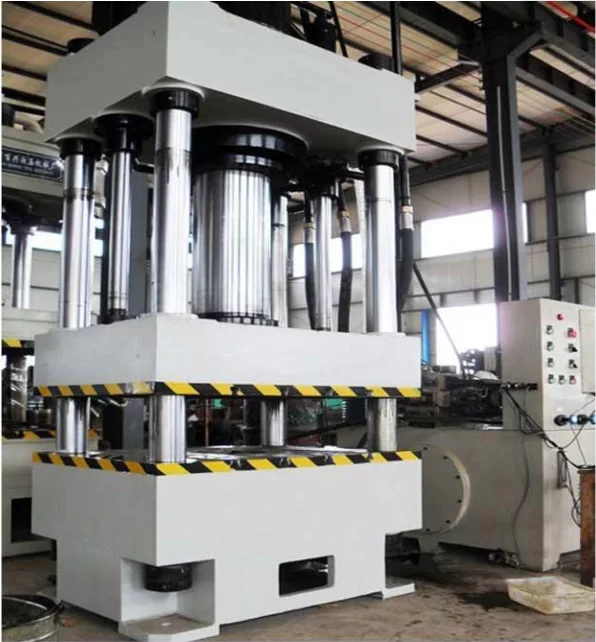
The main cylinder cannot be pressurized or the pressure cannot be maintained.
1. One or more of the F22-F28 charging valves are faulty, causing the pressure oil pressurized by the master cylinder to drain from the faulty charging valve, causing the master cylinder to not be pressurized or the pressure cannot be maintained.
①The main spool and the mating surface of the filling valve are stuck with a guide. Clean and remove
②The main spool of the filling valve is not tightly matched with the mating surface.
③The fixed part of the main spool guide rod of the filling valve is broken. And the main spool falls into the upper cavity of the oil cylinder, causing the pressure port and the drain port to communicate.
④ The control piston of one or several filling valves cannot be reset, causing the main spool of the filling valve to be in an open state.
2, 2YA, 3YA electromagnetic overflow valve failure, causing the pressure oil output by the high-pressure oil pump to be in an unloaded state, resulting in no pressure in the system, and the main cylinder cannot be pressurized.
①The fatigue strength of the overflow valve spring is not enough or broken and does not work. Check and replace.
②The joint surface of the relief valve and cone valve is not matched. Check the research and distribution.
③The 2YA and 3YA electromagnets are not working. Check whether there is electricity passing through.
④2YA, 3YA solenoid valve core or iron core is seized and cannot be reversed, cleaned, and equipped.
⑤F2, F4 main cartridge pressure valve plug-in main valve core orifice is blocked by foreign matter. Check and clean.
⑥F2, F4 main cartridge pressure valve spool and valve sleeve are seized, check the research and distribution.
⑦The thrust spring in the F2, F4 main cartridge pressure valve is broken, check, and replace.
3. The pressure valve that controls the upper chamber of the master cylinder is faulty, causing no pressure in the master cylinder pressurizing system, causing the master cylinder to not be pressurized. There are two situations:
1) The remote pressure regulating valve F12 of the master cylinder fails, causing the main valve of the F11 pressure valve to open and spill oil.
①There is foreign matter in the spool of the remote pressure regulating valve of the master cylinder. Check and clean.
②The valve spring of the remote pressure regulating valve of the master cylinder is broken. Replace it.
2) The main relief valve is faulty, causing the main spool of the F11 pressure valve to open and clear oil.
①The main relief valve cone valve is not sealed. Check the research and distribution.
②The main relief valve spring is fatigued or broken. Replace it.
3) The F11 cartridge pressure valve is faulty, and the pressure of the pressurized system is drained from F9. (see attached picture 1 for the specific structure)
①The main valve core orifice of the plug-in pressure valve plug-in is blocked by foreign matter. Check and clean.
②Insert the pressure valve. The core and sleeve are seized. Check the research and distribution.
③The thrust spring in the cartridge pressure valve is broken. Check and replace
4. The seal ring of the piston head of the main oil cylinder is aging. Replace it.
The pressure of the main cylinder is slow and cannot reach the specified value.
1. One of the 3YA, 2YA electromagnetic relief valves have only a fault, causing the pressure oil output by one of the high-pressure oil pumps to be in an unloaded state, resulting in an insufficient flow of the system pressure as oil, resulting in slow pressure up the speed of the main cylinder, which does not meet the value of the requirement.
① The solenoid coil is not working. Check if there is electricity passing through.
②The solenoid valve core or iron core is seized and cannot be reversed, cleaned, and equipped.
2. One of the F2 and F4 main cartridge pressure valves does not work normally, causing the oil pump to fail to build pressure.
① The main valve core orifice of the plug-in pressure valve plug-in is blocked by foreign matter. Check and clean.
② The cartridge and valve sleeve of the cartridge pressure valve are seized. Check the research and distribution.
③ The thrust spring in the cartridge pressure valve is broken. Check and replace
3. 1# or 2# oil pump failure.
① 1# or 2# oil pump flow is not enough. Adjust the variable head scale to 7-8 divisions.
② The oil return pipe of 1# or 2# oil pump returns a large amount of oil, and the pump leaks seriously, so replace the oil pump.
③One of the 1# or 2# oil pumps cannot build pressure. Check and repair or replace it.
4. The pipe joint leading to the upper cavity of the master cylinder is leaking. Check and replace the sealing ring.
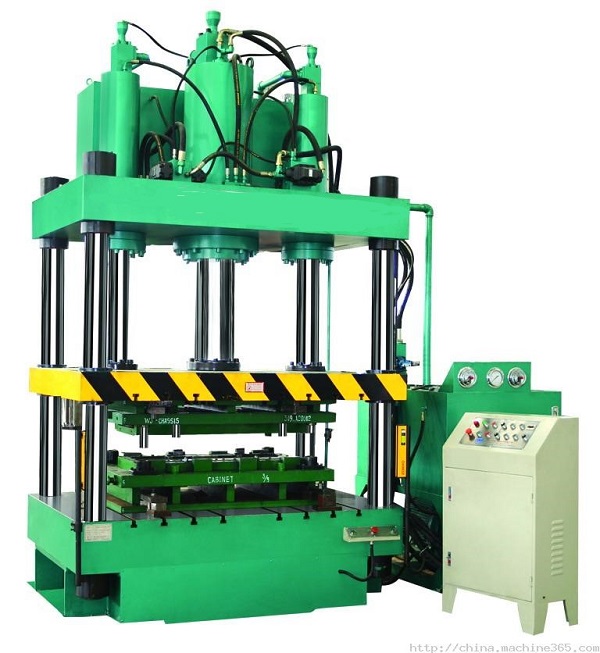
There are other actions of the slider.
When it runs down from the top dead center, it will be fast. That is when it touches the slow travel switch, the slider stops and does not move. The reason is that one or more of the F22-F28 filling valves are faulty, causing the pressurized pressure oil to drain. The pressure of the upper cylinder is small and the supporting force is fast.
①The main spool and the mating surface of the filling valve have a guide card, which can be cleaned and removed.
②The main spool of the filling valve is not tightly matched with the mating surface.
③The fixed part of the main spool guide rod of the filling valve is broken, and the main spool falls into the upper cavity of the oil cylinder, causing the pressure port and the drain port to communicate.
④ The control piston of one or several filling valves cannot be reset, causing the main spool of the filling valve to be in an open state.
The sliding speed of the sliding block is slow, and there is high pressure in the upper cavity of the main cylinder. The cause of the failure is 6YA solenoid valve failure.
①The solenoid coil does not work. The F8 main valve of the lower cavity oil circuit is not opened, and the oil in the lower cavity of the cylinder overflows from the safety relief valve of the lower cavity of the F7 master cylinder. Check the power supply.
②The solenoid valve spool is stuck and cannot be reversed. The F8 main valve of the lower cavity oil circuit is not opened. The oil in the lower cavity of the oil cylinder overflows from the safety relief valve of the lower cavity of the F7 master cylinder. Check the research and distribution.
The hydraulic cushion slips down to the top dead center failure.
1. The sealing ring of the piston head of the hydraulic cushion cylinder is broken. Replace the sealing ring.
2. When the 14YA reversing valve is not in the neutral position and the three lower chambers of the hydraulic cushion three cylinders are connected. There are four conditions that can also cause the hydraulic cushion to slip down.
1) The F17 cartridge pressure valve is faulty, causing no supporting force in the supporting cavity of the hydraulic cushion. (see Figure 1 for the specific structure)
①The main valve core orifice of the plug-in pressure valve plug-in is blocked by foreign matter. Check and clean.
②The plug-in pressure valve core and valve sleeve are seized. Check the research and distribution.
③The thrust spring in the cartridge pressure valve is broken. Check and replace.
2) F18 overflow valve failure.
①The main relief valve cone valve is not tightly matched, so it is researched and equipped.
②The main relief valve spring is fatigued or broken. Replace it.
3) The valve port of the F21 hydraulic control check valve is not tightly matched, and it is equipped with research.
4) The spool of the 13YA solenoid directional valve is not in the neutral position, causing the F17 main valve to open.
The hydraulic cushion does not eject failure.
1. There are two cases of electromagnetic directional valve failure.
1) The 2YA, 3YA electromagnetic overflow valve is faulty, which causes the system pressure to be unable to be built.
①The fatigue strength of the overflow valve spring is not enough or broken and does not work. Check and replace.
②If the joint surface of the relief valve and cone valve is not matched. Check and match.
③The 2YA, 3YA electric's iron is not working. Check if there is electricity passing.
④2YA, 3YA solenoid valve core or iron core is seized and cannot be reversed, cleaned, and equipped.
⑤F2, F4 main cartridge pressure valve plug-in main valve core orifice is blocked by foreign matter, causing the ejection system to be weak, check and clean.
⑥F2, F4 main cartridge pressure valve spool, and valve sleeve are seized, and the system pressure cannot be built up by the ejector. Check the research and distribution.
⑦The thrust spring in the F2, F4 main cartridge pressure valve is broken. And the system pressure cannot be built up when the ejector is pushed out. Check and replace.
2) 12YA solenoid valve failure
①The solenoid coil does not act, causing the pressure oil to not enter the cylinder. Check the power-on condition.
②The solenoid valve core is stuck and cannot be reversed, causing the pressure oil to not enter the oil cylinder. Check and replace it.
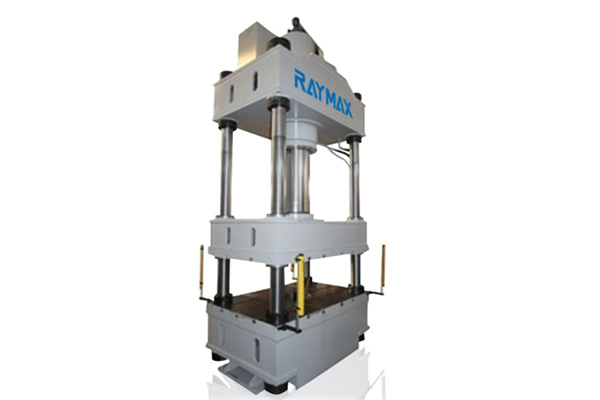
The hydraulic cushion does not return at the top dead center or the return speed is slow.
1. The 11YA solenoid valve is faulty, causing the system pressure not to enter the return cavity of the hydraulic cushion cylinder.
① The solenoid coil does not work. Check the power-on condition.
②The solenoid valve core is stuck and cannot be reversed. Check the research and distribution.
2. The F15 main cartridge pressure valve does not work well, and the oil leaks seriously, resulting in insufficient retraction force and slow retraction speed.
3. 2YA, 3YA electromagnetic flow valve failure, resulting in a return to building can not afford the system pressure.
①The fatigue strength of the overflow valve spring is not enough or broken and does not work. Check and replace.
②The joint surface of the relief valve and cone valve is not matched. Check the research and distribution
③The 2YA and 3YA electromagnets are not working. Check whether there is electricity passing through.
④The valve core or iron core of the 2YA, 3YA solenoid valve is seized and cannot be reversed. Clean, research, and match.
⑤F2, F4 main cartridge pressure valve plug-in main valve core orifice is blocked by foreign matter, causing the ejection system to be weak, check and clean.
⑥F2, F4 main cartridge pressure valve spool, and valve sleeve are seized, and the system pressure cannot be built up by the ejector. Check the research and distribution.
⑦The thrust spring in the F2, F4 main cartridge pressure valve is broken, and the system pressure cannot be built up when the ejector is pushed out. Check and replace.

